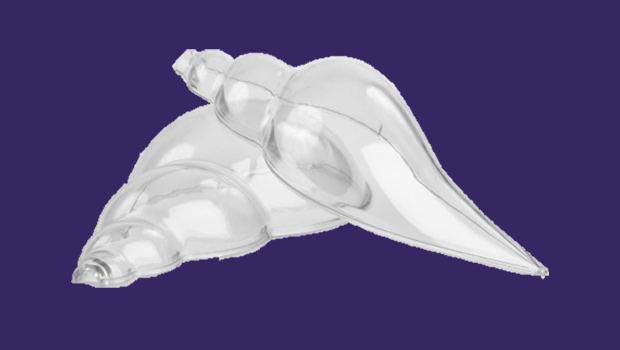Why choose Stereolithography (SLA)?
One of the biggest strengths of the parts produced using the Stereolithography process is their accuracy– SLA 3D Printed parts are able to be printed in high resolution which facilitates printing of fine details and superior surface finishes. The advantage of the stereolithography process is its ability to quickly produce parts with complex irregular features with a very high degree of precision.
Models produced using the stereolithography process can be finished to a very high standard due to their smooth surface finish and this makes them particularly suitable as aesthetic “show and tell” models.
SLA 3D Printed parts are available in a wide range of engineered materials which offer excellent material properties and include a material which is USP Grade VI approved. This makes SLA parts ideal for functional testing.
Unsure if Stereolithography is the right technology for your project?
Request a QuoteMaterials

Xtreme
- Ultra tough, functional grey parts that resist breakage
- Physical properties simulate ABS and polypropylene
- Good moisture resistance and a thermal resistance of over 60°C
- Excellent accuracy and with the look and feel of a durable molded plastic
- Suitable for fit, form and function prototypes and durable assemblies
- Maximum part dimensions: 650 x 750 x 550mm

Watershed
- Water clear ABS-like parts
- Produces highly detailed parts with superior clarity and water-resistance
- Optically clear parts with a smooth finish
- Certified USP Grade VI material
- Maximum part dimensions: 450 x 450 x 400mm

PerFORM
- Off-white ceramic-filled parts
- Strong, stiff, high temperature resistant composite parts
- Excellent detail resolution
- Suitable for applications including high-temperature testing, electrical casings and automotive housings
- Maximum part dimensions: 500 x 500 x 440mm

Si25
- White parts that simulate polypropylene
- Flexible plastic, suitable for snap-fit assemblies
- Maximum part dimensions: 250 x 250 x 250mm

Taurus
- Charcoal ABS-like parts
- Heat Tolerance up to 90°C
- Excellent surface quality and isotropy for highly detailed parts
- Superior strength and durability
- Ideal for most demanding Functional prototyping and end-use applications
- Maximum part dimensions 350 x 350 x 350mm
Technical Specification
| Standard lead time: | 3- 5 days. If your project is urgent, please let a member of the sales team know so that we can investigate if anything can be done to improve the lead time. |
|---|---|
| Minimum feature size: | Normal resolution: 0.15mm | High resolution: 0.08mm |
| Layer thickness: | Normal resolution: 0.1mm | High resolution: 0.05mm |
| Tolerances: | Typically, expected tolerances on well-designed parts are: Normal resolution: +/- 0.15 per 100mm | High Resolution: +/-0.10 per 100mm |
| Max part size: | Normal resolution : 650 x 750 x 550mm | High resolution : 450 x 450 x 415mm |
| Machines: | iPro 8000 | Viper Si2 | 5000 Machine | NEO 450s |
Please note figures provided above are expected tolerances, we cannot guarantee part tolerance.
Process Comparison
| Stereolithography (SLA) | Stereolithography Hi res. (SLA HR) | Digital Light Processing (DLP) | Selective Laser Sintering (SLS) | Direct Metal Laser Sintering Production (DMLS Pro) | Direct Metal Laser Sintering High Res. (DMLS HR) | Vacuum Casting (VC) | Machining (CNC/high-speed CNC) | |
| Description | High-quality precision prints, excellent detail & definition. Wide range of materials. | SLA prints with ultra fine detail & definition | Super high resolution for small & complex parts in durable prototype & production materials | Very tough, high impact and high-temperature resistant. Range of nylon materials | Metal parts with excellent physical and mechanical properties – full production spec (>99% density) | High-resolution metal prints with superior surface finish and ultra-fine detail. | Multiple parts in a range of PU and silicon materials – excellent simulation of moulded parts | Production plastics and metals cut to precise tolerances |
| Layer Thickness | 0.1mm | 0.05mm | 0.01-0.05mm | 0.1-0.15mm | 0.03-0.06mm | 0.015-0.025mm | N/A | N/A |
| Minimum printable XY features | 0.15mm | 0.08mm | 0.05mm | 0.75mm | 0.2mm | 0.1mm | 0.5mm | 0.05mm |
| Minimum printable Z feature | 0.5mm | 0.5mm | 0.3mm | 0.5mm | 0.06mm | 0.03mm | 0.5mm | 0.05mm |
| Tolerance | +/- 0.15 Per 100mm | +/- 0.10 Per 100mm | +/- 0.10 Per 100mm | +/- 0.25 Per 100mm | +/- 0.10 Per 100mm | +/- 0.10 Per 100mm | +/- 0.5 Per 100mm | +/- 0.01 Per 100mm |
| Max Part Size | 650 x 750 x 550mm | 450 x 450 x 415mm | 124x70.2x196mm | 320 x 320 x 600mm | 250x250x305mm | 90x90x90mm | 1500 x 700 x 500mm | 1000 x 600 x 600mm |
| Quality of printed Surface Finish | ★★★★ | ★★★★★ | ★★★★★ | ★★ | ★★ | ★★★ | ★★★★★ | ★★★★★ |
| Lead Times | 3-5 Days | 3-5 Days | 3-5 Days | 3-5 Days | 5-7 Days | 5-7 Days | 5-10 Days | 1-3 Weeks |
| Price | ££ | £££ | ££ | £ | £££ | ££££ | £££ | ££ |
Finishing Options
LPE has a team of experienced in-house traditional model makers and a full spray-painting booth allowing us to offer our customers a range of finishing and painting options.
Standard
Components produced using the SLA process are sanded to remove support structures and build lines and then bead blasted for an overall smooth finish.
Polished
SLA Watershed parts can be polished as clear as possible.
Metal Plating
It is possible to metal coat SLA parts in a range of different metals including chrome and nickel.
Medical grade clean-up
SLA parts can be given an ISO13485 medical-grade clean up which means the parts can be used in a surgical environment.
Other paint finishes
It is possible to give SLA parts a range of paint finishes including cosmetic (Pantone/RAL colour matching), matt, satin, spark or gloss.

Applications
Stereolithography is ideal for prototyping. It can also be used for some production applications.
Prototyping
- Fit and Function Testing
- Visual prototypes and aesthetic models
- Master Patterns for Silicon Rubber Moulds
- High-Temperature Models
- Wind Tunnel Testing Models
- Medical models
Production
- Low volume production of parts with complex geometries
How does SLA work?
The Stereolithography process is a 3D Printing technique in which 3D CAD data is converted into physical solid models, layer by layer, by curing a liquid photopolymer resin with a UV laser. Structural supports are created during the setup process and these are then manually removed once the printing is completed. The parts are washed in a solvent solution to remove uncured resin and placed in a UV light oven to receive a final post-cure. Support structures are removed with gentle sanding and bead blasting.
Request a QuoteFAQs
-
What colours are available for SLA parts?
All colours are available for SLA parts.
-
Which industries commonly use SLA?
All industries commonly use SLA.
-
Which types of plastics are used in SLA?
All types of plastics are used in SLA.
-
How accurate is SLA?
Like all industrial additive manufacturing processes, SLA is highly accurate. The high-resolution SLA offered by LPE is one of the most accurate processes available.
-
How much does SLA printing cost?
SLA projects are priced based on quantity, complexity and post-processing requirements. It is a cost-effective alternative to injection moulding. Hi-res SLA is more expensive than standard.
-
Which material is best for my project?
See material info and datasheets in the section above. If you are still unsure which material is best for your project, contact us, and a member of our technical team will assist you.
-
Is SLA cost-effective for low volumes?
Yes, SLA is a cost-effective method of low-volume production.
-
Is SLA best for production or prototyping?
While specific SLA materials are ideal for some production applications, including the medical sector, it is primarily a process suited for prototyping.
-
Can SLA be used for tooling applications?
-
What are the limitations of SLA?
-
How will SLA affect my carbon footprint?
Like other AM processes, SLA offers significant savings on material waste and can help you minimise excess stock, reduce the weight of your parts (and thus your shipping emissions), and onshore/nearshore your manufacturing for further reduced shipping emissions.
-
How long do quotes take?
Quotes typically take 2-4 hours.
Why choose LPE?
Range of services and materials
One stop shop for all your prototyping and production requirements with a full range of in-house services and wide range of materials.
Technical expertise
We are the longest established RP bureau in the UK and Ireland, and we have an experienced team of both engineers and modelmakers.
ISO9001 and ISO13485
quality approved
Quality is at the heart of everything we do and is integrated into all our processes. All our parts are finised to the highest standard every time.
Speed of turnaround
Parts can be turned around in a matter of days.
Personal service
Technical sales team offering a professional, experienced and personal service.
 (028) 9070 6940
(028) 9070 6940  sales@laserproto.com
sales@laserproto.com 










